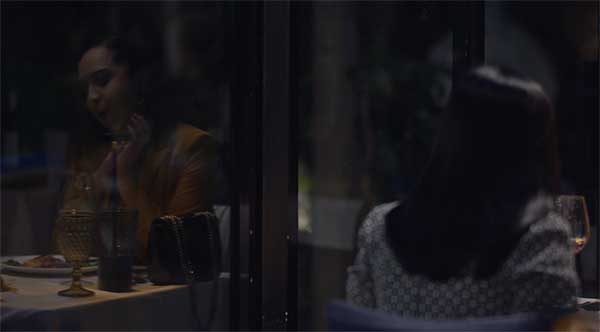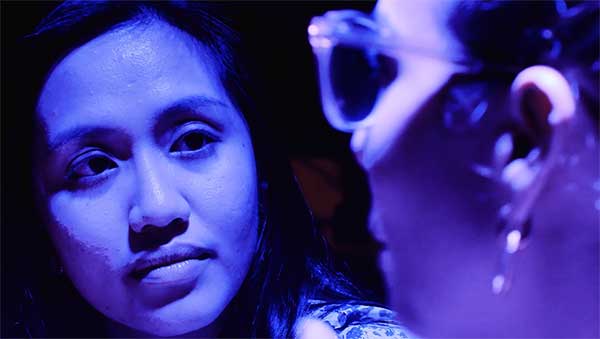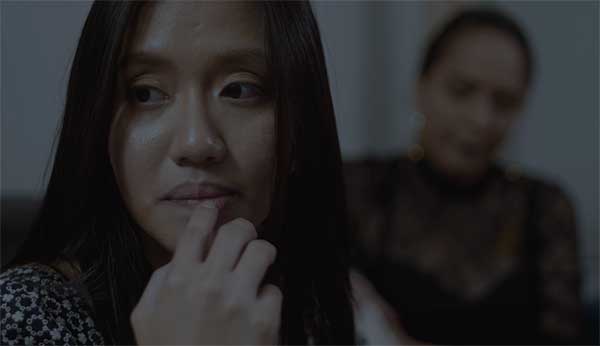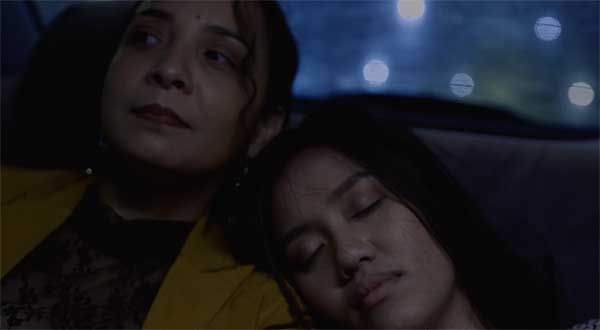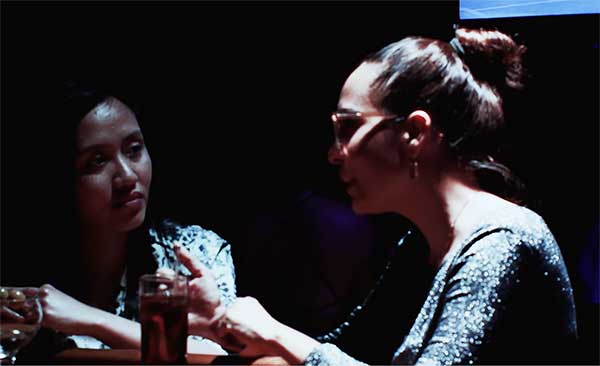By John Ray A. Hontanar
Julie Prescott’s directorial debut in the Philippines is an enthralling homage to a groundbreaking tale in contemporary West Visayan literature: Alice Tan Gonzales’ 1997 Palanca-winning piece, “Isa Ka Pungpong nga Rosas”. Beyond the transmutation of the narrative from text to film, Prescott’s triumph lies in her boldness to marry Tan Gonzales’ feminist theme with her own stand to decentralize the male gaze, as a conscious assertion of her critique of patriarchy and all the trauma that comes with male domination.
This review draws on Laura Mulvey’s concept of the male gaze to argue that Prescott’s queer-feminist approach challenges and redefines traditional cinematic perspectives. Laura Mulvey, renowned for her defining essay “Visual Pleasure and Narrative Cinema” (1975), applies psychoanalytic theories from Jacques Lacan and Sigmund Freud to offer a feminist critique of heteropatriarchy in film. Mulvey posits that the male gaze portrays women as passive objects of male desire, shaping audience perceptions through a heterosexual male lens. Audiences (male or female) are programmed to view women from the point of view of a heterosexual man. Mulvey suggests that female viewers experience the narrative by identification with a male. This active/passive binary of the male characters gazing and the female characters being gazed at reinforces power relations within patriarchal structures. For Mulvey, it is the character that gazes that holds power, as opposed to the one being looked at. The “gazer” represents the ideal I, a character with whom the spectator can relate to. According to Mulvey, the I represents everything that a spectator would want to recognize in themselves.
In “Isa Ka Pungpong nga Rosas”, Prescott renders the male gaze obsolete by humanizing the female characters Gemma and Claire in nuanced ways. The film opens with Gemma, played by Alyanna Cortum, melancholically reflecting on her deteriorating relationship with her boyfriend. This introspective scene is followed by a series of bleak interactions with her friends, culminating in a phone conversation with an acquaintance Claire (Taw Muhammad). The two characters later meet at a restaurant, where the story gradually unfolds. The narrative delves into the emotional depths and intimate connections between these contrasting women, depicting Claire and Gemma as active participants rather than passive objects. Alyanna Cortum’s Gemma is an effective embodiment of fragility, tension, and random comical punches, while Taw Muhammad’s Claire complements the former’s persona by exuding warmth, confidence, and a boldness that does not intimidate, but inspires. Prescott diversifies the gaze by emphasizing Claire’s alpha female persona and Gemma’s subtle femininity, allowing the audience to experience the film through their perspectives.
In contrast to Mulvey’s critique of patriarchy that projects women as objects of male fantasies, Prescott’s film focuses on the physical and emotional bonds between Gemma and Claire through soft and sensual gestures. Prescott frames the cinematic narrative from a very female point of view, focusing on subtle actions and intimate conversations between characters. The camera captures their lips, eyes, and hand movements, conveying tenderness and care, instead of resorting to traditional camera angles that objectify the female body through close-ups of curves and cleavages. “Isa Ka Pungpong nga Rosas” employs the female gaze to highlight that Claire and Gemma’s interactions transcend from the physical to the emotional. Claire and Gemma exchange glances and share moments of adoration, demonstrating female characters’ agency in directing the narrative’s action and tension.
In traditional male-produced cinematic narratives, women typically serve only two functions: as erotic objects for the characters in the story and as erotic objects for the spectators in the theatre. “Isa Ka Pungpong nga Rosas” offers pluralities of gazing by deconstructing the male gaze as the sole vantage point of cinematic viewing, catering instead to female (and even queer) desires. It widens the space for a pleasure-driven, and more queer-inclusive viewing experience. Radicalizing her critique of patriarchy, Prescott shows her bravura in shifting the spotlight away from male characters. As the narrative unfolds, Prescott focuses on the slow unraveling of female trauma, juxtaposing it with male dominance and abuse. The film portrays male characters as caricatures, and unapologetically paints them as one-dimensional figures. From Ronald’s silhouette to close-up shots of Larry’s hands, Prescott does not spend a single second showing the faces of her male characters. All the men from Gemma’s past — her unfaithful ex-boyfriend to her abusive older brother — are projected as silhouettes, body parts, and mere specters that serve as emotional/memory triggers in Gemma’s consciousness. This avant-garde experimentation to subdue male characters functions as a feminist subversion of the masculine body/space as embodiments of absolute power. This bold move adds to the complex interrogation of patriarchy as Prescott redirects the gaze of the camera and the gaze of the viewer from men to the plight of women. This reversal of power exposes patriarchy to criticism, eventually leading characters like Claire and Gemma to discuss their negative experiences with systemic oppression, toxic relationships, and accumulated trauma.
“Isa Ka Pungpong nga Rosas” reaches its cinematic zenith when its successful questioning of patriarchy leads to the blossoming of a safe “women-loving-women” space. The absolute rejection of patriarchal ethos opens new possibilities and definitions of power, love, and tenderness within female spaces. Prescott highlights Tan Gonzales’ legacy of advancing feminist and queer representations by showcasing the affection between Claire and Gemma, two troubled women who found solace in each other’s company. While the possibility of romance remains open to interpretation, the powerful imagery of two beautiful, female characters sharing a moment of deep friendship and fragility creates a powerful message of liberation against patriarchal and heteronormative archetypes. Female homosociality (and even homosexuality) should not be dictated by masculine/feminine binaries. This articulation of what used to be an invisible identity opens another liberating space away from the male gaze and the meanings and labels that it tries to impose on other genders. Philippine literature and cinema have triumphantly moved past the comical and one-dimensional representations of gayness or kabaklaan; it is high time we diversify queer and female representations by pluralizing the way we direct the gaze towards women-loving-women identities, spaces, and relationships.




















